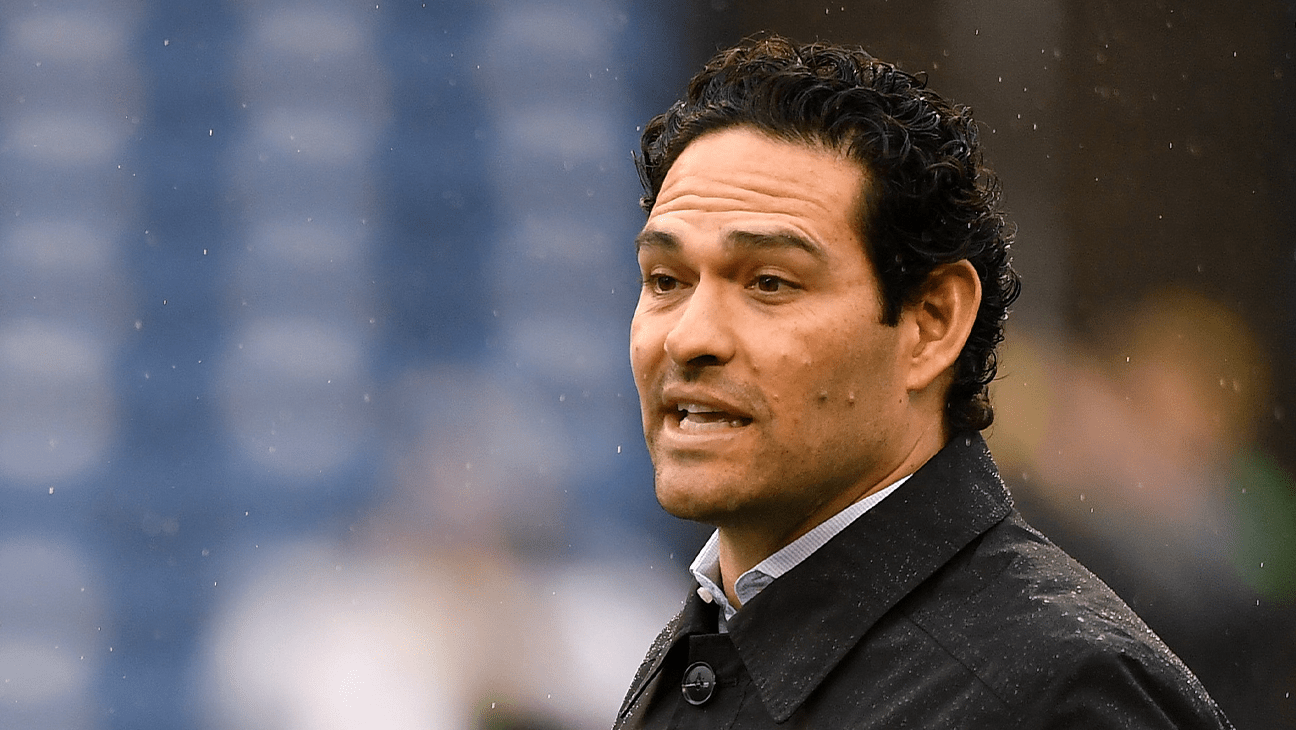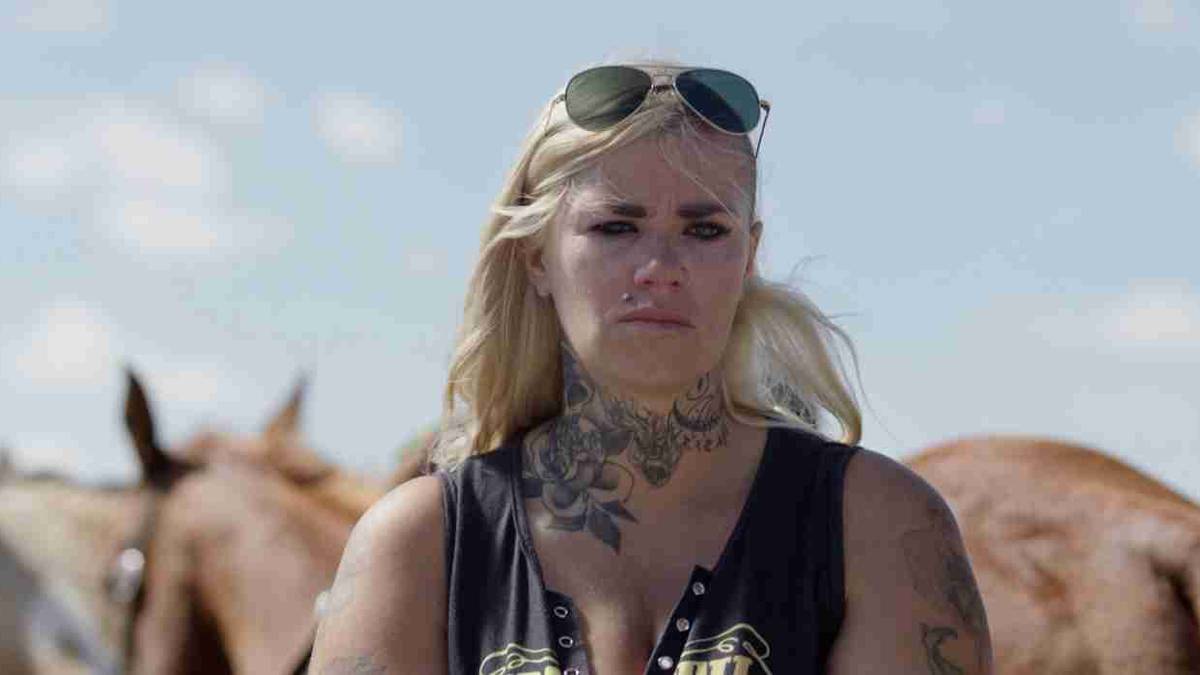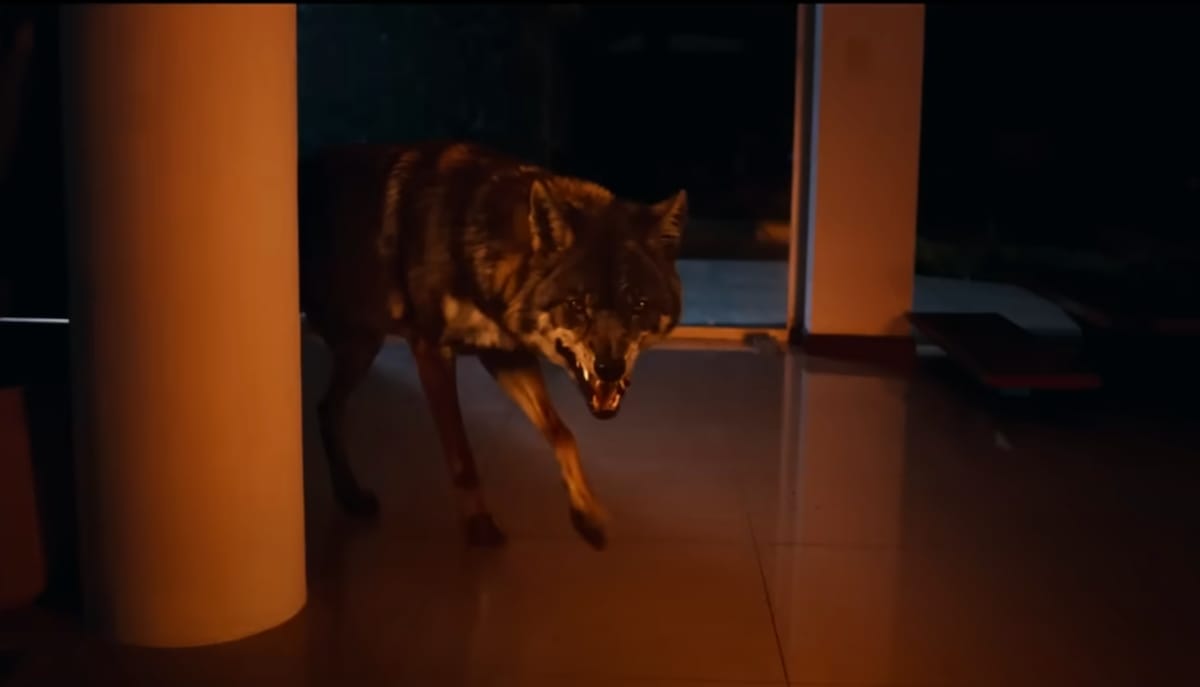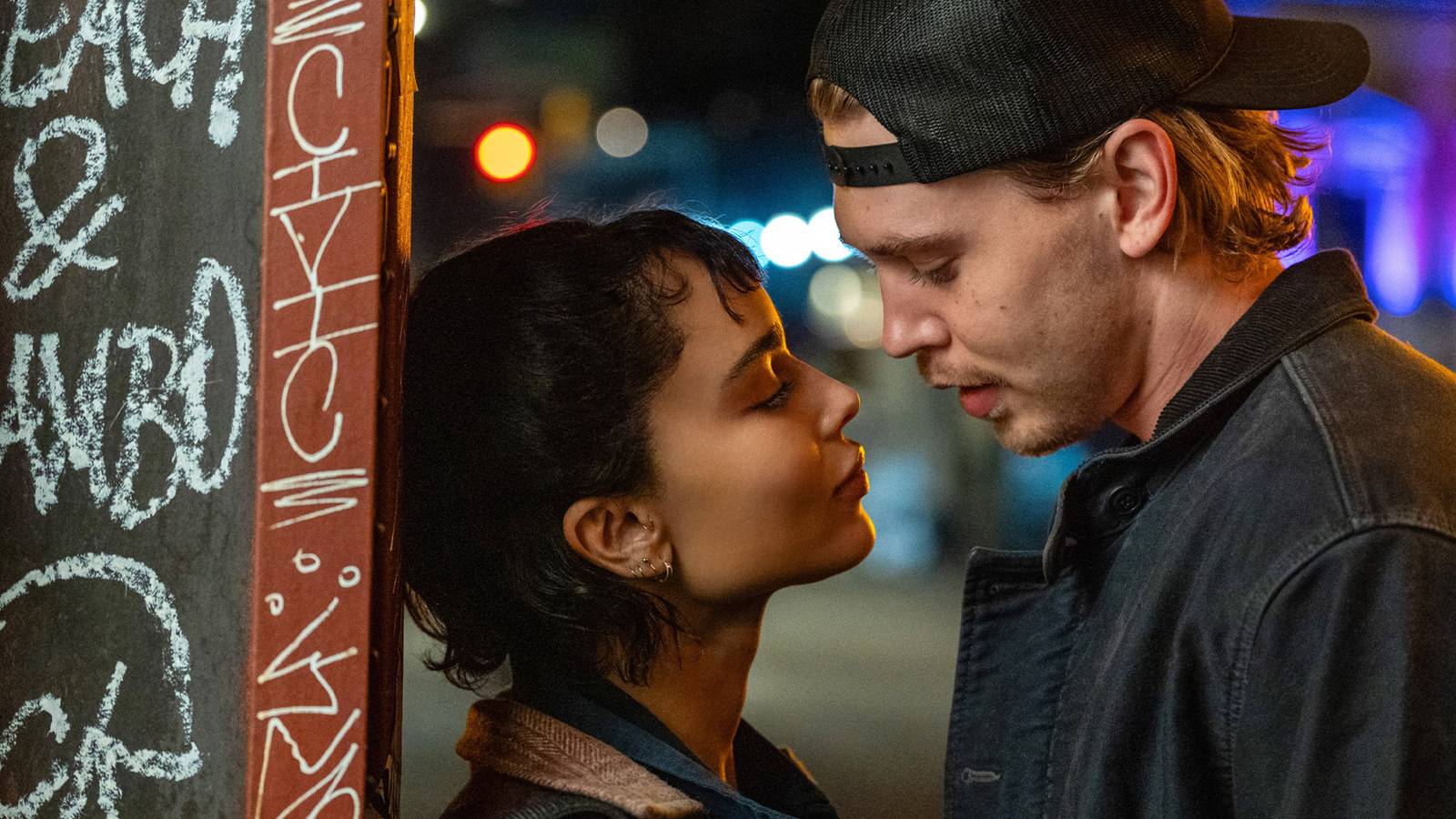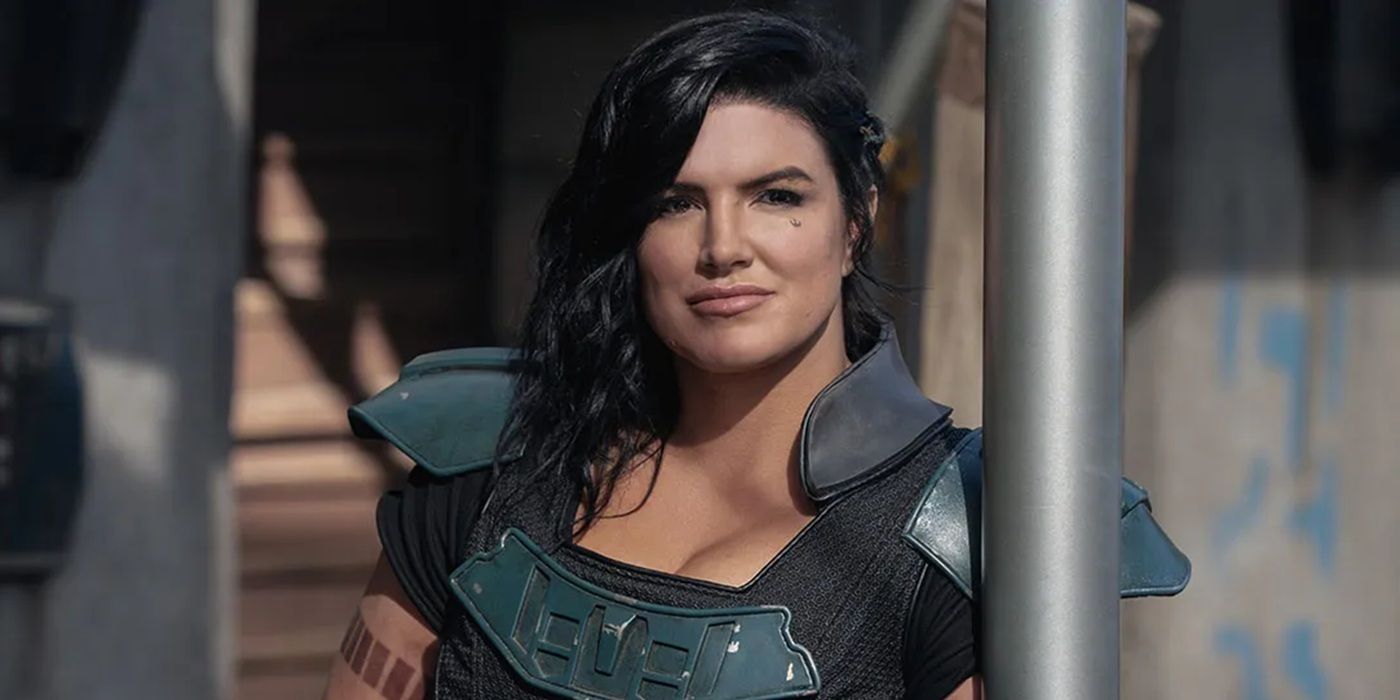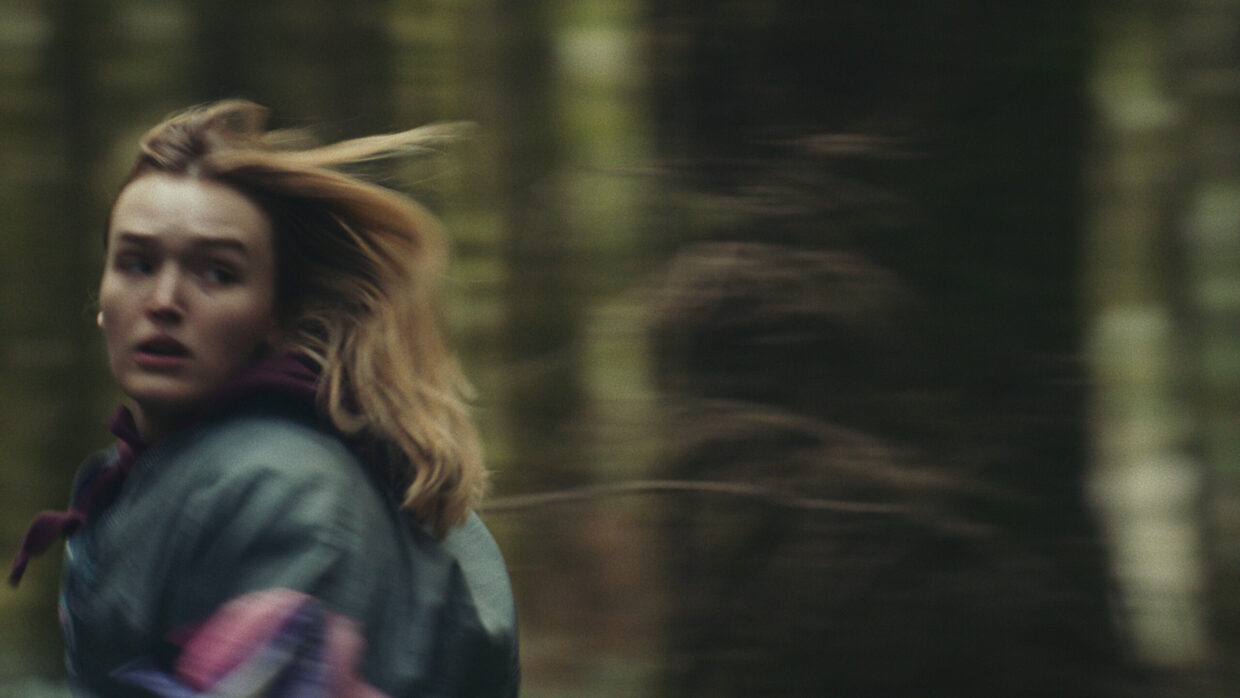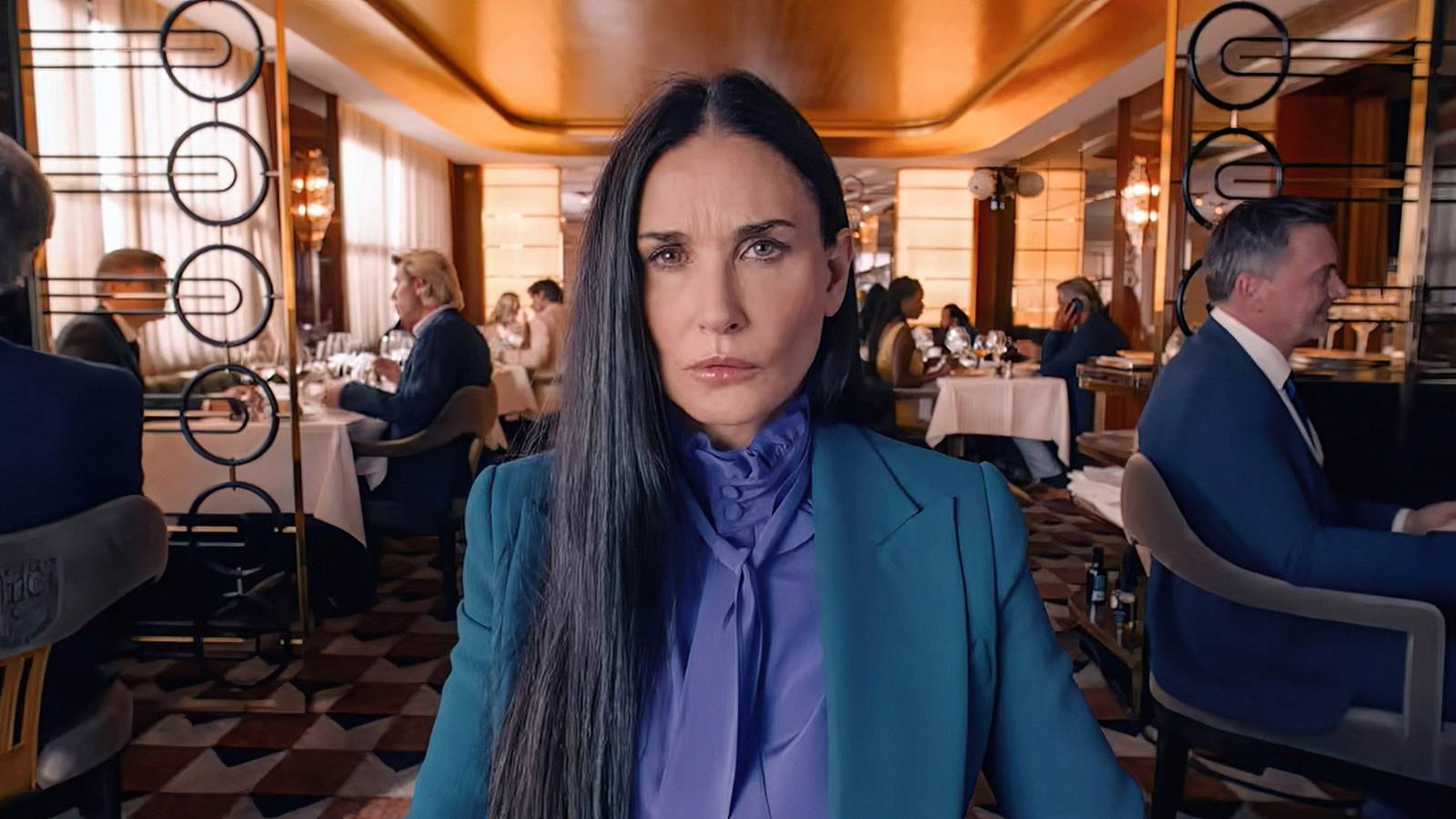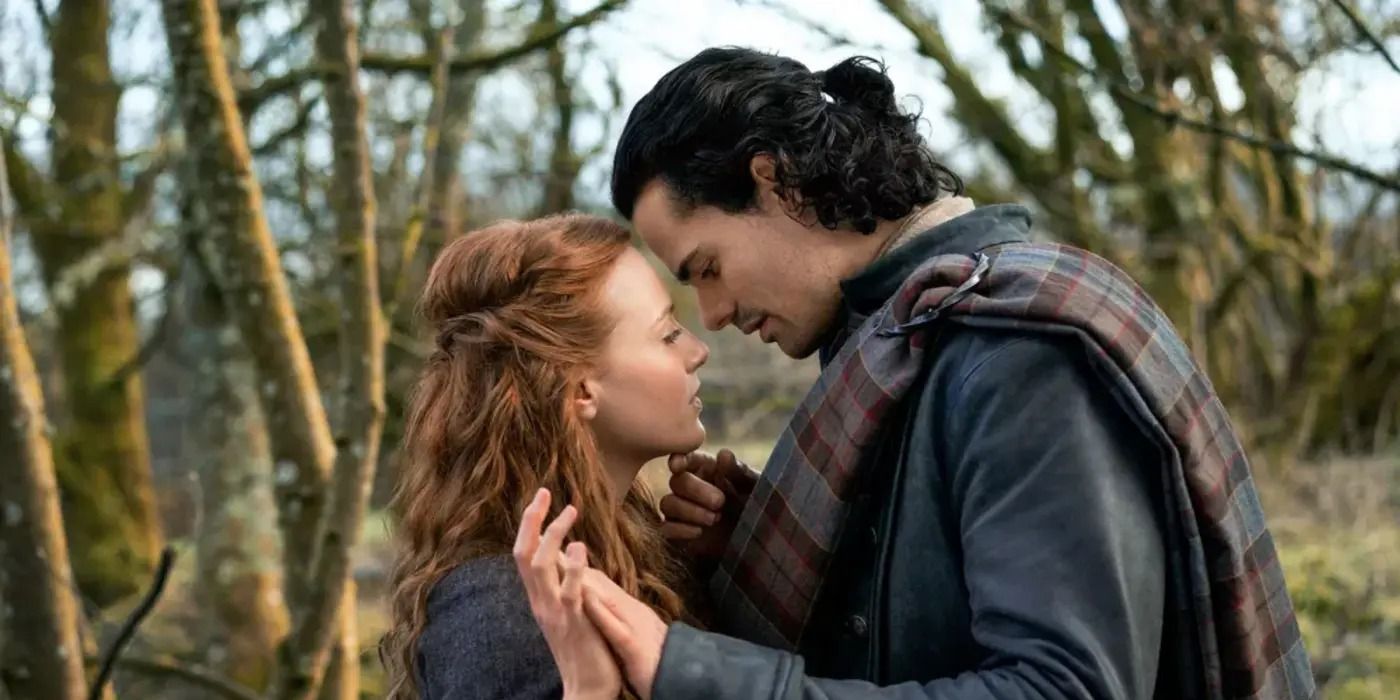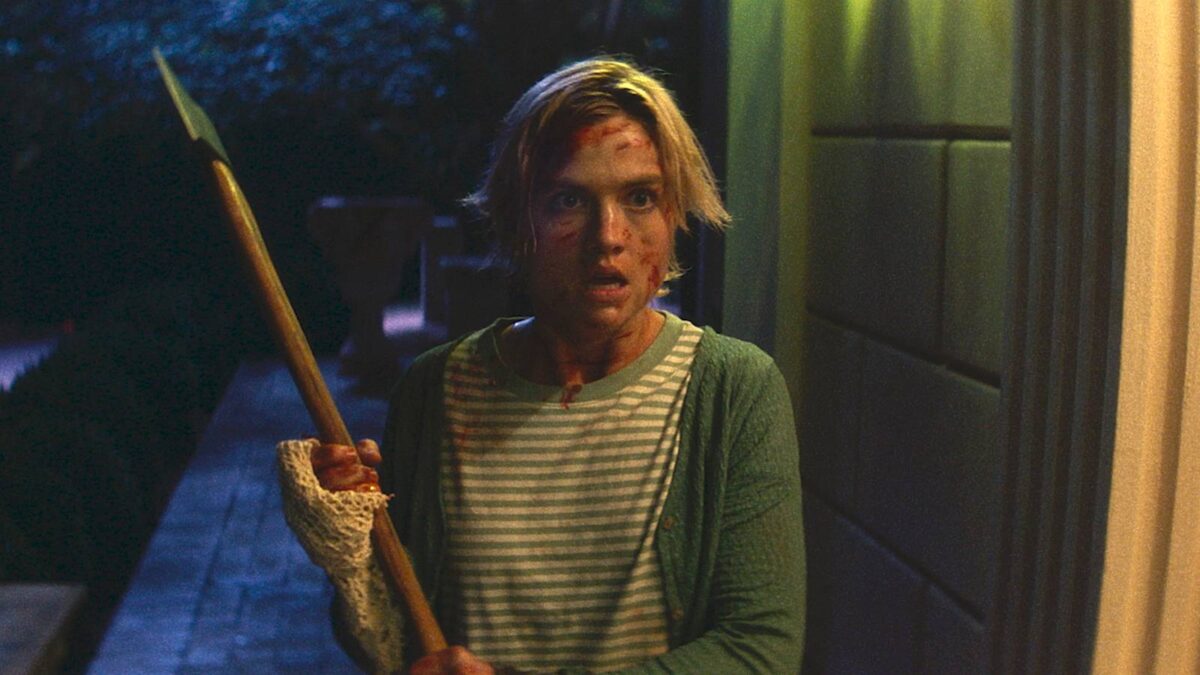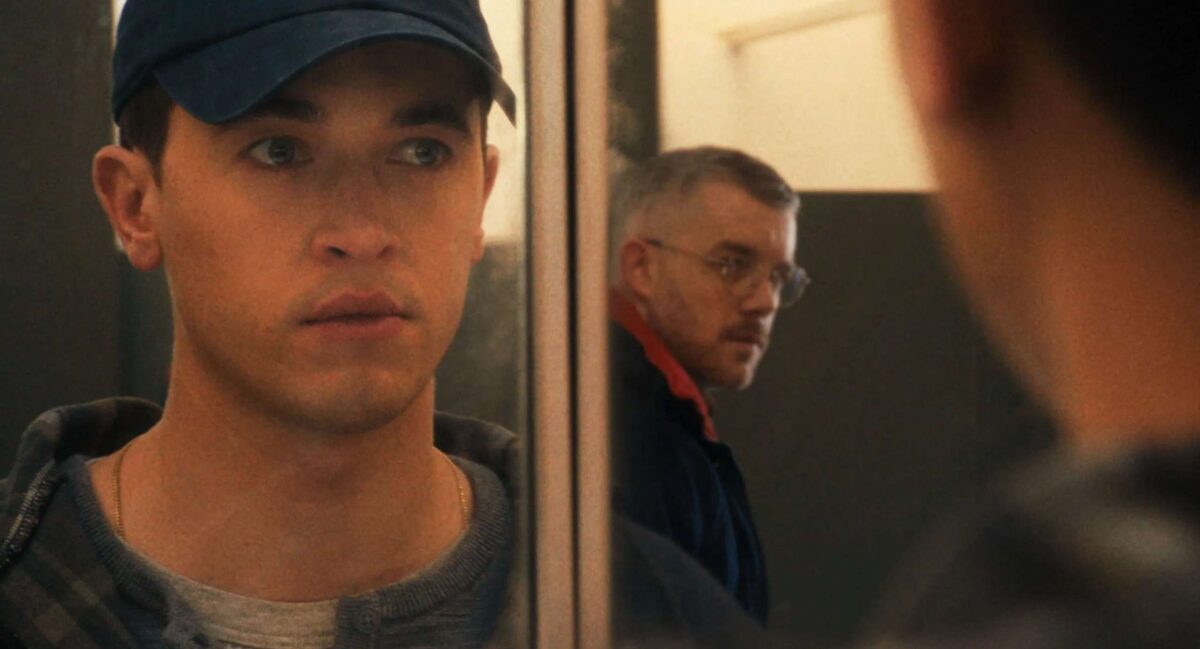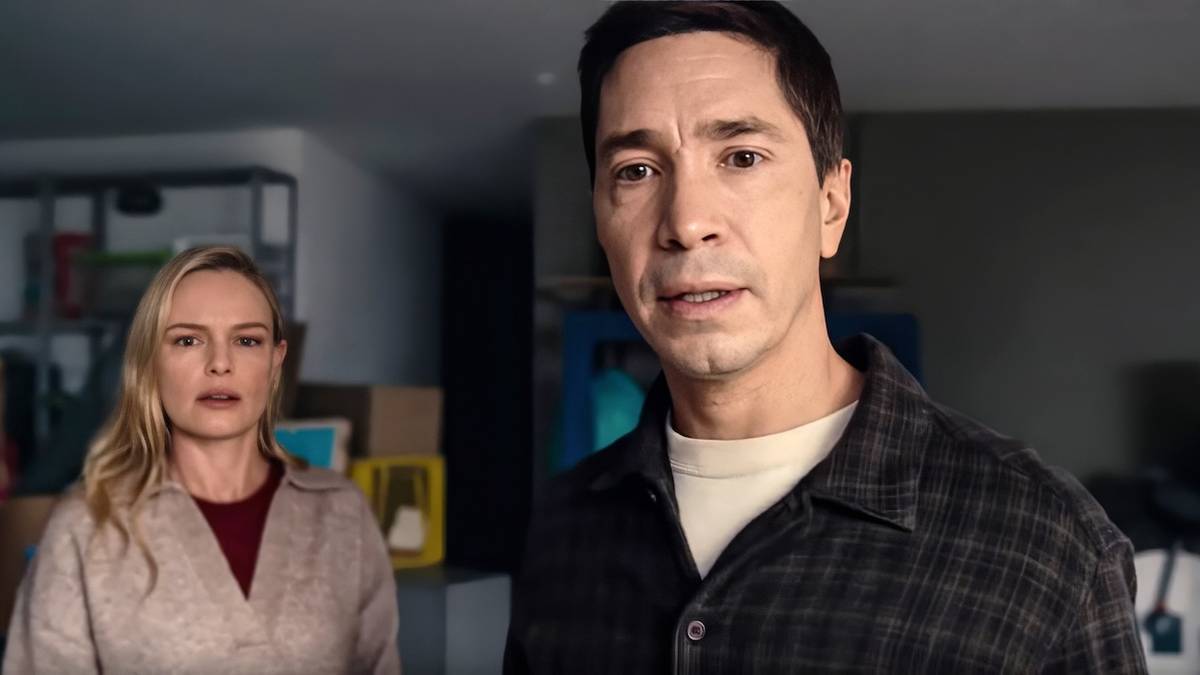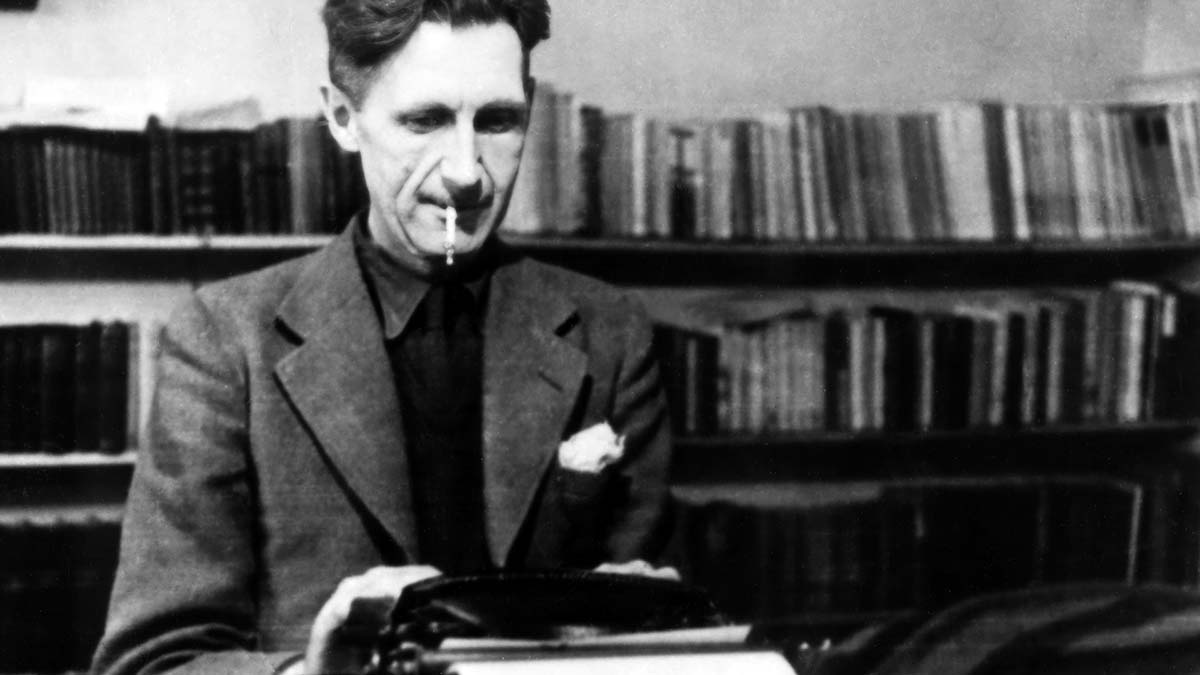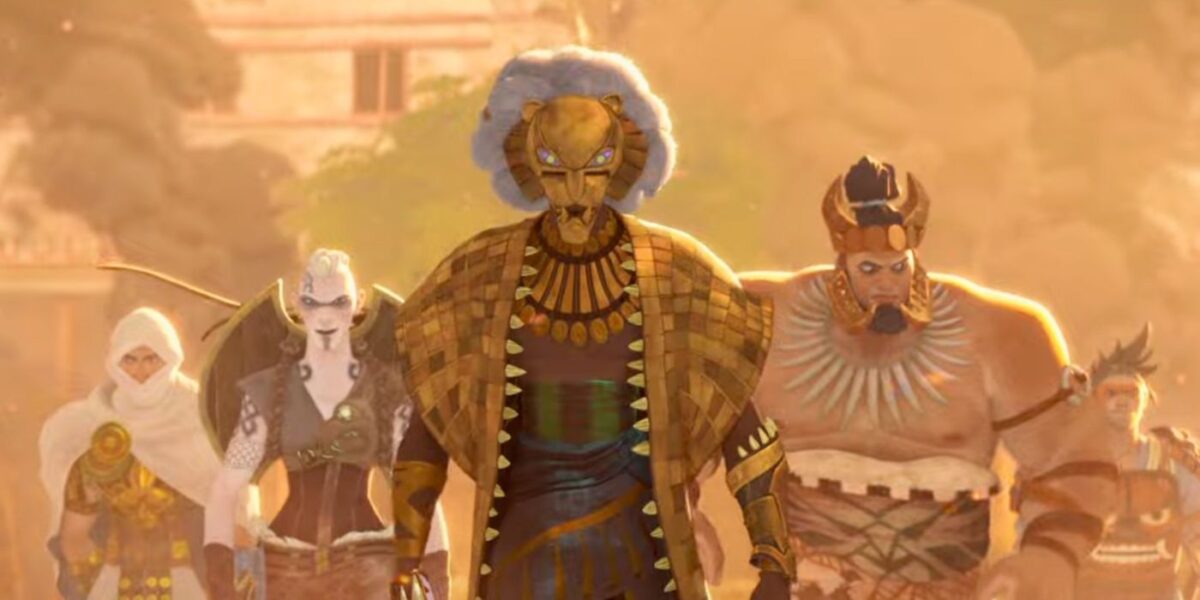
‘Eyes of Wakanda’ Showrunner Explains the Time-Traveling Plot of the ‘Black Panther’ Prequel Series
Jun 18, 2025
Summary
Collider’s Steve Weintraub attended the Eyes of Wakanda panel at the 2025 Annecy Animation Festival.
Showrunner Todd Harris premiered Episode 1, “Into the Lion’s Den,” at the festival before the Q&A.
During the panel, Harris discusses the making of the series, from his initial pitch to Kevin Feige, to the writers’ room, to the design and time-traveling storyline.
At this year’s Annecy Animation Festival, Eyes of Wakanda showrunner Todd Harris attended a panel to premiere Episode 1, “Into the Lion’s Den,” and discuss at length the making of the “anthology adjacent” series. The show is an expansion of Ryan Coogler and Marvel Studio’s Black Panther on-screen legacy that, at least in the first episode, takes fans back to 1260 B.C., where our hero, disgraced Dora Milaje warrior Noni (Winnie Harlow) is tasked with retrieving stolen Vibranium artifacts. In addition to Harlow, the series enlists the all-star vocal talent of Cress Williams (Black Lightning), Lynn Whitfield (Madea’s Family Reunion), Isaac Robinson-Smith (X-Men ’97), Steve Toussaint (House of the Dragon), and Anika Noni Rose (The Princess and the Frog). Harris, who previously worked in the art department on numerous Marvel projects, including Black Panther, Avengers: Endgame, as well as on John Wick and more, spoke at the panel about the process from the writers’ room to the artistic influences behind the stunning animation. Collider’s Steve Weintraub was able to attend the panel and captured all the details (spoilers excluded) about what fans can expect from the four-episode series, like the timeline explored, the inspiration behind the time-traveling mission, surprising MCU cameos, designing fight sequences, and more.
‘Eyes of Wakanda’ Explores the Culture That Created the Black Panther
“This is a spy story” that travels through time.
Image via Marvel Entertainment
QUESTION: It’s obviously not the same time period [as the Black Panther movies]. Would you explain the premise of the show to us? We are 3,000 years ago, here. Is that going to be true for all the episodes? TODD HARRIS: First of all, I love that you love it. It sounds like I’m not alone. It sounds like the room loved it. HARRIS: Ultimately, the show is, I call it “anthology adjacent.” We have a spark, an impetus for the whole premise of the show, which is someone takes something that doesn’t belong to them, and like any institution that starts with their secrets, they make a concerted effort to get them back. The beauty of Wakanda is that it’s a 10,000-year-old society, and they have a very succinct self-identity, and they’re preserving that. We get the chance to see the persistence and character of Wakandans. The premise of the show is, what’s the culture that builds a Black Panther? And you see this even in their generals, their sergeants, and everyday citizens. Everybody in Wakanda is kind of like a physicist that’s a Spartan. You see their patience over centuries to see work that they will never be able to see get finished, but they believe in their mission as a culture to see this work through. So, we kind of hopscotch through time as we see these people pursue the goals of their country, which is to preserve the secret of their technology and who they are. So is the setup here that the artifacts have been stolen, and we will chase them through time? HARRIS: I don’t want to give away too many spoilers, but yeah. Obviously, things get scattered in the four winds, and it’s not like there were AirTags back in antiquity. This is Wakandan technology. I wouldn’t put it past them. HARRIS: I mean, they’re good, but they have to go from the iPhone 1 to the iPhone 14. [Laughs] Mostly, this is a spy story. It’s people who are in the real world and have real-world experiences and make real-world connections, but they also have their nationalist obligation to see the well-being of their people and their culture. So, what is the character challenge of seeing things that challenge your principles, but also making sure that the needs of your culture and your people are met? It’s a false life lived under real emotional circumstances.
‘Eyes of Wakanda’ Is Inspired By Ryan Coogler’s Interest in the Sea People
“It’s a very contested historical point in history.”
How did you and your writing team choose the historical moments, the different countries where this is not taking place in Wakanda? HARRIS: I was always interested in the historical aspect of Wakanda, because essentially, Wakanda is like Star Trek that just got dropped in the middle of Africa, and it’s just been living there. But how it intersects with time and our idea of how mythologies prevail through time, and those durable stories with magical implications, where do they really come from? They would come from some place that has Star Trek technology. The historical aspect was always there. Ryan [Coogler] really just let us go hog wild, and was very inspirational. He really zeroed in on the Sea People, which was the close of the Bronze Age, and it’s a very contested historical point in history, where these people raided everybody. So, the premise is the Sea People, what if they were led by Wakandans, who had superior technology and tactics? What kind of disruptive force would they be in this era? With that being said, we took that basic spark, and the first writer on the team, an old colleague of mine, Geoffrey Thorne, who is like a Wikipedia of Marvel information, was part of the writing team. Another amazing talent who was a showrunner and a live-action writer-director, and Mark Bernard, and we all diligently put the story down to really find the juicy moments that made our comic book nerdness… Is this former Entertainment Weekly editor, Mark Bernard? HARRIS: Oh, yeah. Cool. If you’re skipping through time, I assume we’re going to be meeting new characters. What’s the continuity? HARRIS: One thing you want to see is how does the culture evolve? But their mission’s the same. So, similar motivation, but the tactics evolve. You get to see how Wakanda grows, as well as them pursuing the same things. It’s a chance to meet not only new people, but a new Wakanda, and a new type of Wakanda agent.
Todd Harris Pitched This Idea During the First ‘Black Panther’
“I believed the story was so important that even if I wasn’t a part of it, it should get made.”
Image by Jefferson Chacon
The bulk of your career has been spent on storyboards. You’ve worked on some amazing movies, a lot of Marvel movies — Avengers, Black Panther, Black Widow, Shang-Chi. You’ve done work with John Wick movies, Atomic Blonde. This is your first brush with animation, I believe. What’s the transition to animation been like for you? HARRIS: It’s kind of like coming home, ironically enough. I came from animation, but also, animation is, as you know, as an art a very diverse group of people — animators, storyboard artist, concept artists. All these different people come together. I realized I was probably not built to be an animator, so story kind of spoke to me more. I spent a little bit of time with animation, then spent the bulk of my career in video games, and then eventually feature films. Feature films is a different animal. Live-action is, of course, where I live at for the most part, but I love animation. Animation gives you opportunities that are just built into the nature of what it is that you can’t quite get in live-action. I once said that one of the beauties of animation is that Brooklyn costs just as much as Mars because it’s all art direction. So, you get instant buy-in with a fantastic concept. It’s that visual exploration that you’re allowed to do in animation that you have to work so hard in live-action to get the audience over to your side. Whereas in animation, you’re just like, “That’s a horse with an elephant head? I’m good with it. And he’s an accountant? Okay!” You can just jump right in, and everyone’s ready to roll, and then you can just get into the meat of the story. Entertainment careers will take you all over the place. I would not have imagined eight years ago I would be doing this. I was working on Avengers: Infinity War, and I remember I pitched this to Kevin [Feige]. Then they threw me over to Black Panther, and I pitched it to Ryan. I believed the story was so important that even if I wasn’t a part of it, it should get made. This was, like I said, Black Panther 1, Avengers: Infinity War, and before there was an animation studio, I wanted it to actually be an accompanying piece for the Black Panther movie, but they didn’t have an animation studio at that point. But once they did, apparently it stuck, and they remembered it, and it was like, “Hey, remember that Black Panther idea you had? That Wakanda idea?” And here we are. I could actually see storyboarding being your superpower in the sense of all of these projects come out of a comic book tradition. In a way, that is the link between panel storytelling and comic books, and how are we going to translate this? HARRIS: Absolutely. Marvel loves art. As a storyboard artist, you really feel integrated into the process. They love to draw an image. They just love it. Also, usually, as a storyboard artist, depending on your relationship and where you’re at, you get a chance to see a little bit too much of how the sausage is made, because you’re right next to the directors, the producers, the deadlines. Between the script and on the day of shooting, there are a lot of people who have got to be informed of what they’re doing, and nothing clarifies an explanation faster than a picture point to point at.
Todd Harris Explains the Inspiration Behind ‘Eyes of Wakanda’s Visual Look
“I was chasing a certain look.”
Image by Steve Weintraub
First of all, the show is widescreen. Seeing it on the big screen, you’re thinking beyond people’s devices, their home televisions, and you’re really picturing this with a theatrical lens. There are some sequences in this that are just astonishing to look at, just from a composition point of view. I love when we see Noni sneaking off to the ships, and she’s darting through the backgrounds. Let’s take just the macro level. This is almost painterly in its look. What was that decision? How easy was it to implement? HARRIS: Even the way I work personally, I like things to have a tooth and a feel to it. I love the feel of traditional media. I had my influences, and we had so many great painters. The head of the art department was Craig Elliott, who was a painter’s painter. Like, I could paint, that guy’s a painter. I was chasing a certain look, and as we were going through various development meetings, one of my favorite illustrators is Dean Cornwell, and he was kind of the earliest American illustrator from the early 20th century. He and then Ernie Barnes. If you’re not familiar, Ernie Barnes was a quintessential African-American illustrator from the ‘70s. If you’ve seen the Times, he did the cover for Marvin Gaye’s cover. But that hand-painted design, Dean Cornwell, specifically, was our guiding light, and Craig Elliott really helped craft that, creating an atmosphere. We were fortunate enough to get an amazing lineup of artists from all over the world, some from Nigeria, South Africa, parts of Egypt, all over the world. So, I would say that’s the main part of it. Then, composition-wise, composition is everything. It’s everything! It’s the guiding light for every fight sequence, every still shot, every moving shot, and making sure that not only does it feel like a painting, but it has depth and atmosphere. We wanted to make sure that if you stopped it, you could kind of feel the oil look and some of the painterliness without it overpowering the aesthetic of the show.
Related
“Hatut Zaraze Is Like Wakanda’s CIA”: Marvel Teases What To Expect From ‘Eyes of Wakanda’
Wakanda forever!
Well, in some more than others. I just described the ship sequences where things are fairly tight and detailed, but then there’s a moment just a few minutes later where we see the lion looking through his telescope, and everything over his shoulder is much more painterly. It can coexist within the same world. HARRIS: Absolutely. We try to keep the sci-fi nature of the show within the painterly nature because we’re trying to create that contemporary classical kind of look. How about just the look of characters, or specifically what humans look like in this or what Wakandans look like in this world, because there’s a way, sometimes in American animation, where there can be a kind of uniformity across designs from one thing to another. You’ve come up with your own dimensions and proportions. HARRIS: Our character team, I really wanted to make sure that you just didn’t have, like, “Just change his haircut, change his skin color,” whatever. I wanted to make sure we’re pushing the ethnicity and the bone structure, the facial structure, the body structure, so that at a glance, you know that it’s bespoke to of these kinds of cultural specifics. There was so much talent that I was fortunate enough to work with on the show. I’m thinking of how slender and lanky the body shapes are, and that’s not what I’m necessarily used to seeing now on TV and in animation. Is that your choice, the artists’ choice? Is there kind of a lead artist who’s steering the art direction? HARRIS: It was an aesthetic I was pushing just because Ernie Barnes and Charles A. Bibbs, and other African American artists that I felt was authentic to that part of Africa. It was a kind of guiding light. Once we nailed the aesthetic, we basically did our best to perpetuate it. We’ll be visiting different cultures, and we try to do the same thing. Also, when we were animating it with the amazing people at Axis Animation, we also were very cognizant of different fight styles, so people move differently. The language of that was very much because I did a lot of work with the John Wick guys. I always joked, “I have to have the action be good, because I can’t have these guys making fun of me.” So, yeah, we were very cognizant about making sure that if you see a culture in here, it represented their combat aesthetic.
The ‘Eyes of Wakanda’ Look Outside Their Kingdom
But do they find what they’re looking for?
Image via Marvel Studios
Let’s talk about a fight sequence. Is that something where there will be a choreographer and people blocking it out that is then the model for the animators, or is it more done in computers? HARRIS: It always starts with people. Unfortunately, we didn’t have a dedicated stunt choreographer or anything like that, but I had my assistant. He put his body on the line; I had to choke him out on camera sometimes so we could put that on video. We had a fantastic animation lead who just understands action. So, we kind of collected a band of scalawags that all have the same aesthetic. One of our board artists who’s fantastic with action — it’s funny because you get some guys who are really good with cinematic, like the unwinding city of ships, where they hit the Rube Goldberg aspect of it — he was leading the fray. I told him, “Just imagine James Bond, Pirates of the Caribbean, and a Rube Goldberg machine all in the same.” He was like, “Got it, boss!” And he did all of that. Same thing with the action. Then I just do what I do. I have a lot of experience with people punching each other and running for their lives. I kind of put a little bit of my shine all on it, but most of the team just went all in, and the action really did their thing. One of the things about the Black Panther universe is setting up this society that never existed, that can represent a greatness, and here you’re already kind of questioning at the same time as you’re expanding it in this series. I’m curious about that walk of specifically starting to question are the leaders of this society really being honest, or is there more to it? HARRIS: Historically, stillness is a difficult thing. Wakanda, by definition, has remained a singular kingdom for 10,000 years. That seems easy, but in historical terms, the death of all societies comes from over-expansion. When do you know what’s enough? So, it seems like it’s easy just to stay the same size, but staying still against the currents, like a fish does, takes effort and energy, and sometimes you have to challenge your principles in doing that. So what are they willing to do to stay where they’re at and still be them and not overexpand and do all the temptations that have created the currents of the history that is our shared world? So, it comes at a cost. You have fallouts like Goliath and these different kinds of things, where they have to actually put energy into making sure that their civilization remains their civilization. It’s kind of the dynamic we saw with Michael B. Jordan in Black Panther. He has a plausible argument to be against the system he’s challenging, and it makes it a stronger tension. HARRIS: That always is the tension. If you have the capabilities, how much do you do? How much do you not do? What is your responsibility? Because, in my heart, I think Wakanda is also looking for a friend. They want to see people who reflect their needs. Eyes of Wakanda is very much about their eyes on the world, so it’s through the lens of them looking out on us. I would imagine someone like them would like to find a kindred spirit in the world, but they see what they see. Like Lion, he sees opportunity because chaos breeds opportunity for people with questionable morals.
‘Eyes of Wakanda’ Will Bring In Familiar Marvel Characters
“You try to make the statement you want to make in every iteration.”
Image via Marvel Comics
My last question is actually about the very beginning of what we saw just in those opening credits, which were really distinct and cool, and that first moment where the staff comes down and the chalk bursts off the page. Tell us a little bit about that because that’s just a little artwork unto itself. HARRIS: That was all done by hand, all of it, by a brilliant studio called AKA. It was funny, I boarded that sequence, and they dropped the art direction because we explained to them what we were looking for, and they were like boom! Because, like I said, we were very much preserving the hand-drawn feel, and that was actually hand-drawn, so it worked out. There was a version of the show where we were going to do 2D montages, but with time and production, those kind of went wayward, but I still wanted to take the opportunity to make the intro carry the spirit of that, and usually, classically, most paintings start with a charcoal drawing. So, a charcoal drawing leads to a painting, kind of like our show. It also teases that it will be moving through time up to the present. HARRIS: Yeah, there are some hints in there. AUDIENCE: We saw a little bit of the Dora Milaje. Are we going to see a bit more of Wakanda in terms of the tribes and maybe the King, and that kind of stuff, just more of Wakanda itself? HARRIS: I will say this: you will see parts of Wakanda no one has ever seen. AUDIENCE: I’m from Nigeria, and I want to just say thanks for the authenticity that you’re putting into this show. It’s really good to see a show of this size and standard have this kind of representation, and it doesn’t look fake. The work you’ve put in, I can say as an African, I can really see the authenticity coming through. So, Marvel is really large with a lot of characters. You might not be able to be specific, but are we going to see maybe different renditions of some of our favorite characters featured in this story as well? HARRIS: The only thing I could tell you is what I was told I was able to tell you. [Laughs] There will be an Iron Fist in here, and not the Iron Fist you all expect. Also, to Nigeria, we had unbelievable artists who kept us very honest. I appreciate the fact that you acknowledged the authenticity we were trying to maintain. But yeah, we will be seeing some things that might be a little familiar. You obviously have to do this in very close collaboration with Marvel’s top-level brains to make sure everything is on canon and everything. A lot of these shows talk to each other, to plant things in Eyes of Wakanda that will have a chance to sprout elsewhere, or lines that connect to other series. Or is this able to be its own self-standing parallel project? HARRIS: Historically, when you do a show, you treat it like it’s the only chance you get, and if the chance to expand and deepen the story comes about, it’s cake, but you try to make the statement you want to make in every iteration. I hope that answers the question.
‘Eyes of Wakanda’ Is Four Episodes
Each episode travels across a new time period.
Image via Marvel Studios
AUDIENCE: I can see symbols that appear to be from West African culture, so I wanted to know how much of that is actually informed by actual symbols that are related to either West Africa or other parts of Africa. HARRIS: Very early on in the design process, because Wakanda’s an old civilization, they’ve been African longer than everybody in Africa, because they’re the one continuous civilization. So what you’ve got to do is you’ve got to look at the present and build backwards. So, what we did was, we took a design principle of fractals, and it’s prevalent in a lot of African sculpture to take a recurring shape and build it out geometrically so you have these nice repeating patterns that have symmetry. We used that design principle that’s prevalent in a lot of African art and had an influence on the way we were depicting Wakandan iconography, if that’s helpful. AUDIENCE: I was wondering about the costumes. I was wondering how the collaboration was made between someone who works online version into animation, and how you were reflecting how to represent Wakanda across time through costumes. HARRIS: Good question. We had a little bit of consultation from the feature film department, and she would keep us honest on what the cultural aesthetics of Wakanda has and making sure that we didn’t veer too far off of it. Like they were like, “Wakandans are a little neater than this. They would have this exposed clutter right here. They would design their way out of it.” But we had a lot of encouragement from the feature film, production design department. It was cool things like that to keep us honest about what kind of aesthetic, like a French building is still a French building, so no matter how far back, there’s a certain aesthetic that culturally lifts through it. So, that was the guiding hand from the feature department.
Related
‘Black Panther’: Costume Designer Ruth E. Carter on the Marvel Movie’s Signature Styles
Could Carter be receiving her third Oscar nomination and maybe even her first win for the MCU movie?
AUDIENCE: I have a technical question. If I’m not wrong, the graphics are mostly in 2D animation. Why is this? HARRIS: Because I love hand-drawn animation. I mean, what else do I need to say? I love hand-drawn animation. It’s just awesome, and it complemented what we were trying to do. It’s cost-effective and it’s efficient. It’s love. At the end of the day, isn’t that why we’re all here? AUDIENCE: We get to see different creatures in the show. I was wondering if in the first episode, and maybe in the pictures we can see behind, if there are some Easter eggs of the creatures we are able to see? HARRIS: That one is pretty much self-contained. He kind of created the Dark Avengers for the past, collecting all these different people. Also, too, no production starts small. I’ve never met any writers like, “Man, we’ve got to pad this up. There’s not enough in here.” We usually overcreate, and then we’ve got to narrow it down. Same thing with artists. I’ve never met any artist that’s like, “I don’t have enough!” So, these just show how much talent and power this one Wakandan can sequester, and all these different cultures were like, “I’m amazing, but I’m still going to follow that dude.” So, this is not really a hint, but like I said, we are hop-scotching through centuries, so you will be able to see a bunch of like, “Okay, I didn’t expect that!” Does that mean you’re not gonna tell us where any of the other landing points are in the centuries? Are there four episodes? Are there more than that? HARRIS: There are four. And each one’s in its own time period or multiple? HARRIS: Each one of those is its own time period, and I’m not going to tell you more than that because I want to make it out of France alive. Eyes of Wakanda premieres on Disney+ on August 6.
Eyes of Wakanda
Release Date
August 6, 2025
Network
Disney+
Franchise(s)
Marvel Cinematic Universe
Publisher: Source link
Erotic Horror Is Long On Innuendo, Short On Climax As It Fails To Deliver On A Promising Premise
Picture this: you splurge on a stunning estate on AirBnB for a romantic weekend with your long-time partner, only for another couple to show up having done the same, on a different app. With the hosts not responding to messages…
Oct 8, 2025
Desire, Duty, and Deception Collide
Carmen Emmi’s Plainclothes is an evocative, bruising romantic thriller that takes place in the shadowy underbelly of 1990s New York, where personal identity collides with institutional control. More than just a story about police work, the film is a taut…
Oct 8, 2025
Real-Life Couple Justin Long and Kate Bosworth Have Tons of Fun in a Creature Feature That Plays It Too Safe
In 2022, Justin Long and Kate Bosworth teamed up for the horror comedy House of Darkness. A year later, the actors got married and are now parents, so it's fun to see them working together again for another outing in…
Oct 6, 2025
Raoul Peck’s Everything Bagel Documentary Puts Too Much In the Author’s Mouth [TIFF]
Everyone has their own George Orwell and tends to think everyone else gets him wrong. As such, making a sprawling quasi-biographical documentary like “Orwell: 2+2=5” is a brave effort bound to exasperate people across the political spectrum. Even so, Raoul…
Oct 6, 2025
